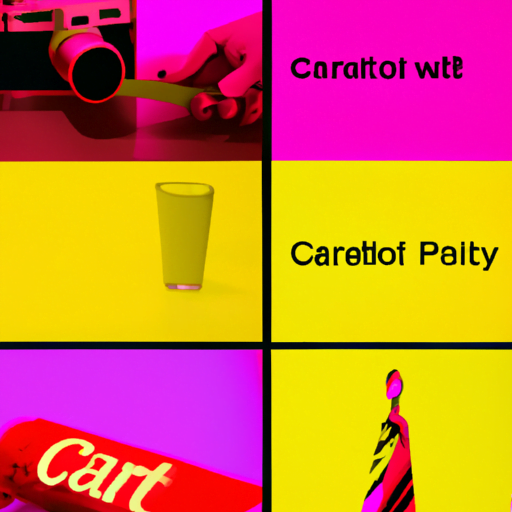
-
Table of Contents
- Creating Interactive and Immersive Experiences through Design
- The Power of Interactive and Immersive Experiences
- The Role of Design in Creating Interactive and Immersive Experiences
- Visual Design
- User Interface (UI) Design
- User Experience (UX) Design
- Interaction Design
- Strategies for Creating Interactive and Immersive Experiences
- 1. Understand the Target Audience
- 2. Use Storytelling Techniques
- 3. Incorporate Gamification
- 4. Provide Real-Time Feedback
- 5. Design for Multiple Devices and Platforms
- Conclusion
Creating Interactive and Immersive Experiences through Design

Design plays a crucial role in creating interactive and immersive experiences for users. Whether it’s a website, mobile app, or physical space, the design elements can greatly impact how users engage with the product or environment. In this article, we will explore the importance of design in creating interactive and immersive experiences, and how it can be achieved through thoughtful and strategic design choices.
The Power of Interactive and Immersive Experiences
Interactive and immersive experiences have become increasingly popular in today’s digital age. These experiences captivate users, hold their attention, and create a memorable and engaging interaction. They allow users to actively participate and explore, rather than passively consume information. This level of engagement can lead to increased user satisfaction, brand loyalty, and even improved learning outcomes.
One example of a successful interactive and immersive experience is the “Nike+ Run Club” app. The app not only tracks users’ running activities but also provides personalized coaching, challenges, and social features. By incorporating interactive elements such as real-time feedback, virtual rewards, and a supportive community, Nike has created an immersive experience that motivates and engages users in their fitness journey.
The Role of Design in Creating Interactive and Immersive Experiences
Design is the key to unlocking the potential of interactive and immersive experiences. It encompasses various aspects, including visual design, user interface (UI) design, user experience (UX) design, and interaction design. Let’s explore how each of these elements contributes to creating interactive and immersive experiences:
Visual Design
Visual design focuses on the aesthetics of a product or environment. It involves the use of colors, typography, imagery, and layout to create a visually appealing and cohesive experience. In the context of interactive and immersive experiences, visual design plays a crucial role in setting the mood, evoking emotions, and guiding users’ attention.
For example, the video game “Journey” by Thatgamecompany is known for its stunning visual design. The game features a vast desert landscape with vibrant colors and breathtaking scenery. The visual design not only enhances the overall aesthetic appeal but also immerses players in the game world, making it a truly captivating experience.
User Interface (UI) Design
UI design focuses on the presentation and layout of interactive elements within a product or interface. It involves designing buttons, menus, navigation systems, and other interactive components that enable users to interact with the product. A well-designed UI can make interactions intuitive, seamless, and enjoyable.
Take the example of the mobile app “Duolingo.” The app’s UI design is clean, simple, and easy to navigate. The use of clear icons, intuitive gestures, and a consistent visual language makes learning a new language a fun and interactive experience. The UI design ensures that users can easily access the app’s features and engage with the learning content without any friction.
User Experience (UX) Design
UX design focuses on understanding users’ needs, goals, and behaviors to create a seamless and enjoyable experience. It involves conducting user research, creating user personas, and designing user flows to ensure that the product meets users’ expectations and provides value.
One notable example of UX design in creating an immersive experience is the “Google Maps” app. The app not only provides accurate navigation but also offers additional features such as real-time traffic updates, public transportation information, and user-generated reviews. The UX design considers the diverse needs of users and provides a comprehensive and immersive experience that goes beyond basic navigation.
Interaction Design
Interaction design focuses on designing the way users interact with a product or interface. It involves defining the behavior of interactive elements, such as buttons, sliders, and animations, to ensure that they respond appropriately to user input. Well-designed interactions can make the experience feel natural, responsive, and engaging.
One example of effective interaction design is the “Tinder” dating app. The app’s swipe-based interaction design allows users to quickly browse through potential matches and make decisions with a simple gesture. The interaction design not only makes the app easy to use but also adds an element of gamification, making the experience more interactive and enjoyable.
Strategies for Creating Interactive and Immersive Experiences
Now that we understand the importance of design in creating interactive and immersive experiences, let’s explore some strategies that can help achieve these goals:
1. Understand the Target Audience
Before designing an interactive and immersive experience, it is crucial to understand the target audience. Conducting user research, creating user personas, and analyzing user behaviors can provide valuable insights into users’ needs, preferences, and pain points. This understanding will guide the design decisions and ensure that the experience resonates with the target audience.
2. Use Storytelling Techniques
Storytelling is a powerful tool for creating immersive experiences. By incorporating narrative elements, characters, and plotlines, designers can engage users on an emotional level and create a sense of immersion. For example, the “Headspace” meditation app uses storytelling techniques to guide users through meditation sessions, making the experience more engaging and relatable.
3. Incorporate Gamification
Gamification involves applying game design principles and mechanics to non-game contexts. By incorporating elements such as challenges, rewards, and leaderboards, designers can make the experience more interactive and enjoyable. For instance, the language learning app “Memrise” uses gamification to motivate users to learn new words and track their progress, creating an immersive and addictive learning experience.
4. Provide Real-Time Feedback
Real-time feedback is essential for creating interactive experiences. It helps users understand the consequences of their actions and provides a sense of control and agency. Whether it’s a progress bar, a notification, or a visual effect, timely feedback enhances the user experience and encourages further exploration and engagement.
5. Design for Multiple Devices and Platforms
In today’s multi-device world, it is crucial to design for a variety of devices and platforms. Whether it’s a website, mobile app, or physical space, the design should adapt seamlessly to different screen sizes, input methods, and contexts. This ensures that users can access and engage with the experience regardless of the device they are using.
Conclusion
Design plays a pivotal role in creating interactive and immersive experiences. By incorporating visual design, UI design, UX design, and interaction design, designers can captivate users, hold their attention, and create memorable experiences. Understanding the target audience, using storytelling techniques, incorporating gamification, providing real-time feedback, and designing for multiple devices and platforms are some strategies that can help achieve these goals. By embracing these principles and strategies, designers can create interactive and immersive experiences that leave a lasting impact on users.
